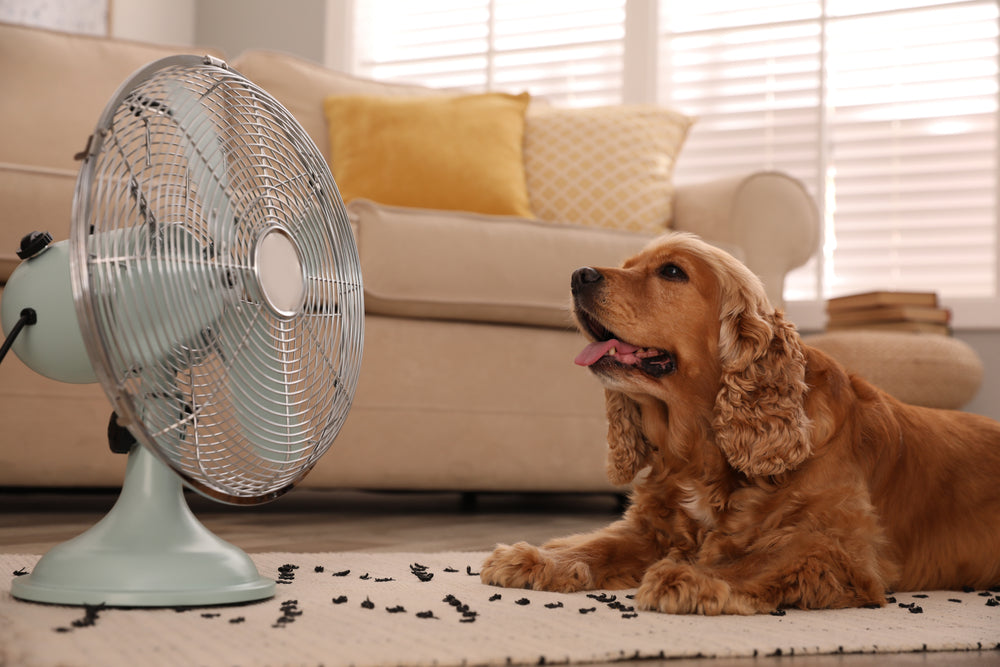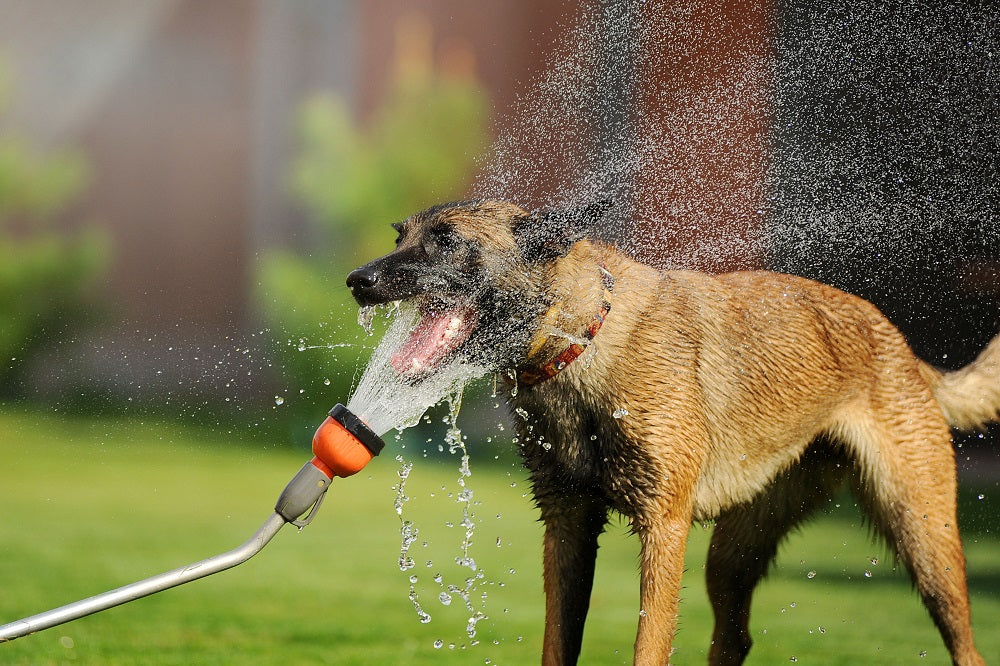As the sun rises higher in the sky and temperatures soar, it’s essential to be mindful of our furry companions’ well-being. Heat exhaustion in dogs is a serious concern during hot summers, and as responsible pet owners, we must understand its significance. In this guide, we’ll learn about heat exhaustion, its symptoms, and effective treatments to keep our canine friends cool, happy, and safe during summer months.
What is Heat Exhaustion in Dogs?
VCA Animal Hospitals states that heat exhaustion is a condition that arises when our dogs become overheated due to excessive exposure to high temperatures.1 Just like us, dogs can struggle to cope with extreme heat, leading to various adverse effects on their health. However, they cannot sweat through their skin like we do. They must rely on panting and sweating through their paw pads to regulate their body temperature. If not addressed promptly, heat exhaustion can escalate to heat stroke, a more severe heat-related condition that can be life-threatening.
Symptoms of Heat Exhaustion in Dogs:
- Heavy panting
- Excessive drooling
- Lethargy and weakness
- Rapid heart rate
- Disorientation or confusion
- Bright red gums or tongue
Identifying Overheating Symptoms:
- Vomiting or diarrhea
- Collapsing or stumbling
- Muscle tremors or seizures
- Elevated body temperature (above 103°F or 39.4°C)
- Unresponsiveness

Risk Factors
Certain factors can increase a dog’s susceptibility to heat stress or heat exhaustion. According to the Humane Society, brachycephalic breeds, like Bulldogs and Pugs, are particularly vulnerable due to their unique respiratory anatomy.2 Age also plays a role, with older dogs and puppies having less heat tolerance. Additionally, dogs with thick coats, overweight pets, and those with underlying health issues are more prone to heat-related problems.
Preventive Measures and Treatments
Keeping Dogs Hydrated in Hot Weather
- Always provide access to fresh, cool water.
- Offer ice cubes or chilled water to help regulate body temperature.
- Consider adding water to your dog’s food during hot days.
Creating a Cool Environment for Your Pet
- Keep your home well-ventilated and use fans or air conditioning if possible.
- Provide shady spots outdoors where your dog can rest.
- Avoid exposing your pet to direct sunlight for extended periods.
Exercising with Dogs in Summer
- Schedule walks during cooler parts of the day, like early mornings or late evenings.
- Choose shady paths for walks to minimize heat exposure.
- Shorten strenuous exercise durations on hot days and take frequent breaks.
Avoiding Midday Walks
- The sun is at its peak during midday, making it excessively hot for your pup.
- Plan indoor play sessions or mentally stimulating activities during this time.

Emergency Response
First Aid for Heat Stroke in Dogs
- Move your dog to a shaded or air-conditioned area immediately.
- Offer small sips of cool water if your pet is conscious and able to drink.
- Apply cool, damp towels or use a fan to lower your dog’s body temperature.
- Use a spray bottle filled with cool water to spray each paw pad
Contacting a Veterinarian during Emergencies
- Seek professional veterinary care promptly if your dog’s condition does not improve.
- Do not attempt to treat severe cases of heatstroke at home.
Difference between Heat Exhaustion and Heatstroke in Dogs
Heat exhaustion is an early stage of heat-related illness, marked by excessive panting and discomfort. Dr. Jerry Klein, Chief Veterinary Officer for the AKC, describes heat stroke as a more severe condition characterized by dangerously high body temperatures of 105 degrees as well as life-threatening symptoms, including vomiting, unresponsiveness, and seizures.3
Conclusion
As a responsible pet owner, being aware of the early signs of heat exhaustion in dogs is crucial , especially on a hot day. Taking preventive measures to keep your furry companion cool and comfortable can help prevent heatstroke and maintain their overall pet health. Remember, staying vigilant and providing proper care will make all the difference in keeping your dog safe during hot weather.

FAQ
#1 What are the early signs of heat exhaustion in dogs?
Early signs of heat exhaustion in dogs include excessive panting, drooling, weakness, disorientation, and red gums or tongue.
#2 Can heat exhaustion in dogs be fatal?
Yes, heat exhaustion in dogs can be fatal if not addressed promptly and appropriately. If left untreated, heat exhaustion can progress to heatstroke, a life-threatening condition that can cause organ failure and other serious complications.
#3 How do I cool down my overheated dog?
To cool down an overheated dog, move them to a shaded or air-conditioned area, offer small sips of water, and use cool, damp towels or a fan to lower their body temperature.
#4 Are certain dog breeds more susceptible to heat exhaustion?
Certain dog breeds, like brachycephalic breeds and older dogs, are more susceptible to heat exhaustion due to their unique characteristics and reduced heat tolerance.
#5 What is the difference between heatstroke and heat exhaustion in dogs?
Heat exhaustion is an early stage of heat-related illness, while heatstroke is more severe, with dangerously high body temperatures and life-threatening symptoms like vomiting and seizures.
Sources:
- “Heat Stroke in Dogs | VCA Animal Hospital | VCA Animal Hospitals.” Vca, 2023, vcahospitals.com/know-your-pet/heat-stroke-in-dogs. Accessed 31 July 2023.
- “Keep Pets Safe in the Heat.” The Humane Society of the United States, 2023, https://www.humanesociety.org/resources/keep-pets-safe-heat. Accessed 31 July 2023.
- “AKC Canine Health Foundation | Heat Stroke and Heat Exhaustion in Dogs.” Akcchf.org, 2016, www.akcchf.org/canine-health/your-dogs-health/caring-for-your-dog/heat-stroke-and-heat-exhaustion.html. Accessed 31 July 2023.




Leave a comment
This site is protected by hCaptcha and the hCaptcha Privacy Policy and Terms of Service apply.